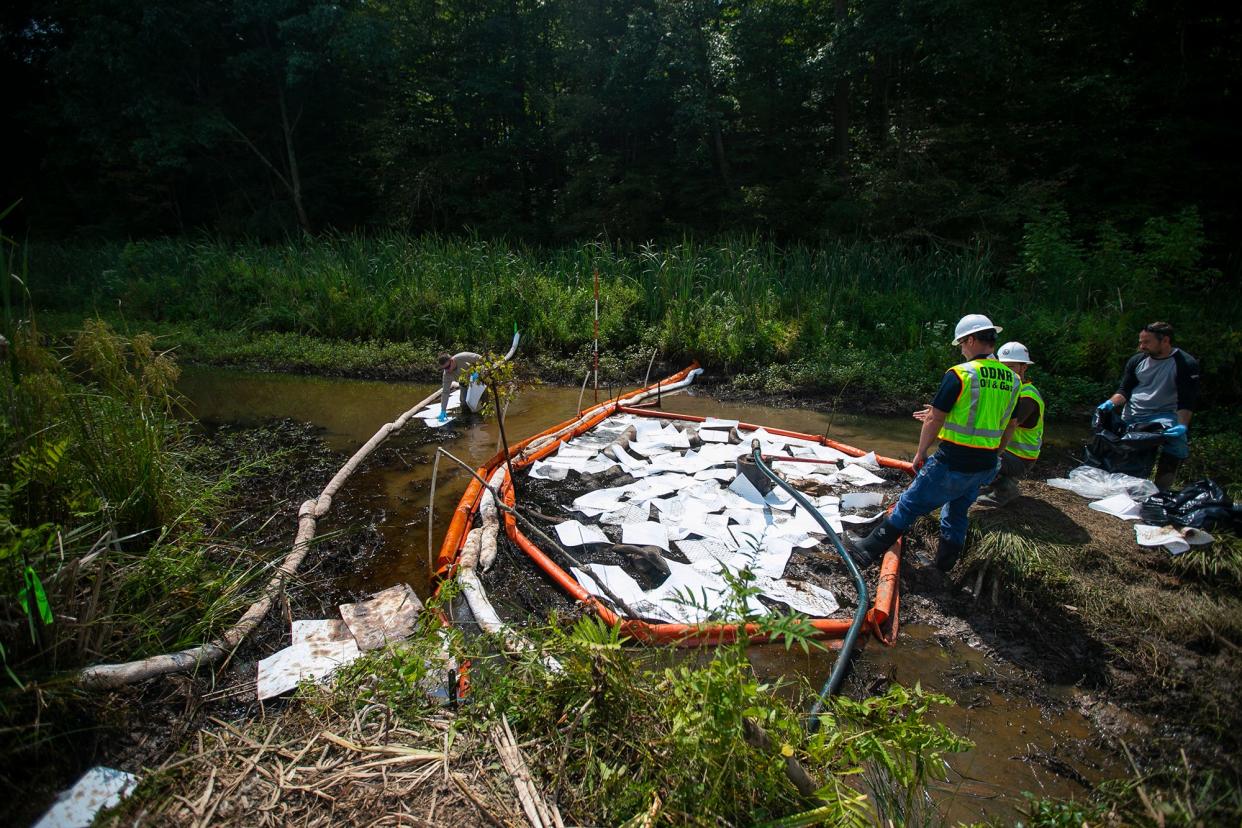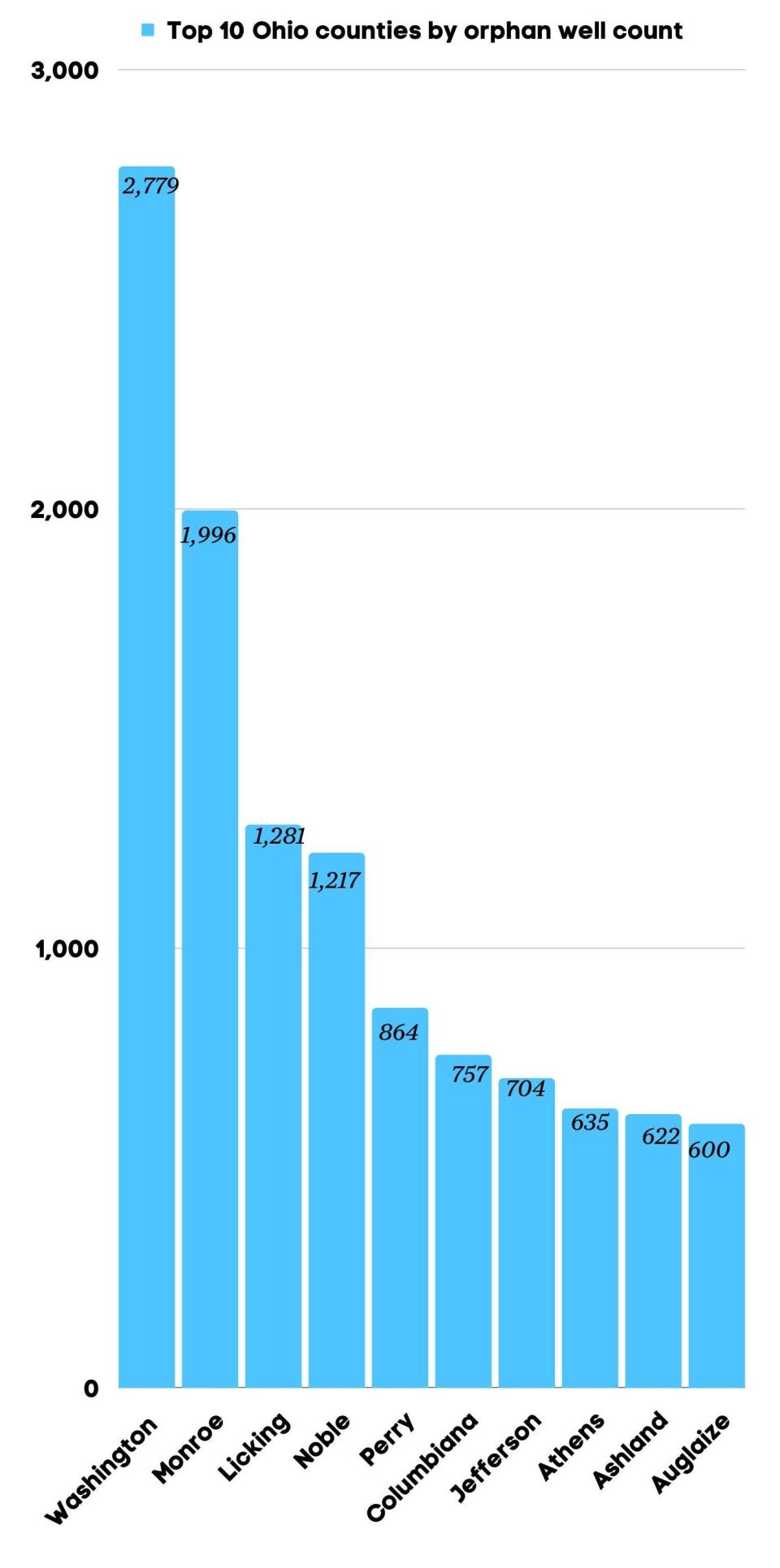'Orphan wells,' methane major pollution concern for Ohio's water, people and animals

Molly Jo Stanley is Southeast Ohio regional director at the Ohio Environmental Council.
Methane set a record for the second year in a row, scientists reported, just as the United Nations' panel on climate change warned the world is running out of time to rein in fossil fuel emissions.
In 2021, methane — the second largest contributor to the human-caused climate crisis after carbon dioxide—saw its largest increase since measurements began nearly 40 years ago.
More:UN panel's grim climate change report: 'Parts of the planet will become uninhabitable'

The U.S. Environmental Protection Agency released new draft rules on methane emissions in November 2022, aimed at cutting methane and other harmful pollutants from oil and gas operations across the nation. While a critical step forward, more must be done to finalize the strongest protections possible.
Leaks from oil and gas wells are common sources of methane pollution.
20,349 Orphan wells
A 2022 study reveals that low-producing wells account for about half the methane emitted from all U.S. wells while accounting for only 6% of the nation’s oil and gas production.
Lacking property owners, orphaned wells present major pollution concerns.
When left unplugged, they are prone to leaking oil and other toxic chemicals, threatening water sources and emitting methane. A 2022 analysis showed Ohio had 20,349 orphan wells — the highest of any state nationwide.
Six of the top 10 Ohio counties with the most orphaned wells are found in southeast Ohio.
Extraction by U.S. industrial development has shaped Ohio’s landscape—over 400 million barrels of oil, 3.6 billion tons of coal and trillions of cubic feet of natural gas have been extracted since the 1800s.
A U.S. Forest Service assessment points to a study suggesting that, in Ohio and the Appalachian Basin, orphan wells drilled before oil and gas regulations were created tend to emit higher amounts of methane.

Communities across southeastern Ohio and the state need stronger regulations to limit methane emissions. Residents of southeastern Ohio have long experienced environmental harm from the oil and gas industry; methane pollution specifically contributes asthma, cancer and many other public health issues.
This guest column is available free: Support the exchange of local and state ideas by subscribing to the Columbus Dispatch.
Not only do strong methane protections reduce pollution and protect public health, they also create new opportunities for goodpaying jobs in methane mitigation and reduction.
A report from the Environmental Defense Fund 2021 found a 90% increase since 2017 in service firms engaged in methane leak detection, measure and repair, and a 33% increase since 2014 in firms making technology to manage methane emissions.
The same report notes that as of 2021, Ohio ranked number 15 nationally for its number of methane mitigation employees.
The Infrastructure Investment and Jobs Act emphasized the importance of reclamation of legacy mining and drilling on Federal lands and authorized appropriations of $4.7 billion to plug, remediate and reclaim orphaned wells as well as $11.3 billion for the Abandoned Mine Land Reclamation Fund.
A 2021 executive order noted that “plugging leaks in oil and gas wells and reclaiming abandoned mine land can create well-paying union jobs in coal, oil and gas communities while restoring natural assets, revitalizing recreation economies and curbing methane emissions.”
We need quick, comprehensive reductions of fossil fuel emissions to slow the climate crisis.
Cutting methane pollution from the oil and gas industry is the fastest, most cost-effective way to achieve this goal and protect the health of all Ohioans. The U.S. EPA will take comment on the proposed rule through February 13, 2023.
There is still time to make your voice heard and tell the U.S. EPA to finalize the strongest rule possible to keep communities like ours safe and healthy.
Molly Jo Stanley is Southeast Ohio regional director at the Ohio Environmental Council.
This article originally appeared on The Columbus Dispatch: What risk is does Ohio have from Methane, orphan oil wells| Molly Jo Stanley

